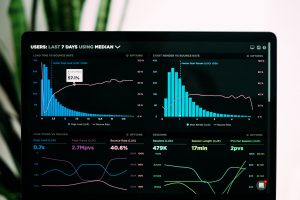Latent Effects Modeling with AI & Machine Learning
We’ve been posting opinions and comments that urge marketers to “get over” artificial intelligence (AI). To dive into AI’s veritable treasure house of research tools and insights, instead of circling it warily, for fear of banging into a “disruption” moment.

Marketers: use advanced analysis techniques for deeper insights
So, I hereby plant the flag of AI for the regular guy (or gal, of course) — well, at least for the professional who wants to use precise and accurate data to propel insights that simply wouldn’t be perceptible with traditional approaches to analysis.
Let’s take a geek’s-eye look around the AI treasure house. Oh, here’s a cool tool — Latent Effects Modeling. Latent variables, as opposed to observable variables, are variables that are not directly observed but are rather inferred (through a mathematical model) from other variables that are observed (directly measured). In short, Latent Effects Modeling takes what you can see and directly measure and infers (predicts) the variables you can’t see or measure. Stuff like trends for example.
Imagine a box ⎯ top, bottom, each of four sides are datasets, all of them interacting with each other at full gallop.
Now imagine a company in the fishing industry – Learnington Inc. In this case, one dataset is about weather, another is about Learnington’s fishing- based revenues, another about how big ships are traveling through their fishing grounds and affecting fisheries – and therefore revenues, or not … toss your own variables and push the button to start the pattern matching and factoring in the variables.
Complex? Yes, but the model crunches away … and comes up with trends and predictions that reveal the unseen trends and variables and how they may play out if the data remains the same.
Latent Effect Modeling is in play as we speak, generating some of the most widely used predictive models of the COVID-19 spread, as well as looking for trends and patterns in marketing data.
People are using it for all sorts of predictive modeling. Things like:
1. Which of several digital campaigns is most likely to produce positive long-term memory of your brand?
2. Which presidential candidate produces the least revulsion/disgust in voters?
3. What range of prices is most likely to produce the greatest sales without losing you money?
4. Which of several email messages is most likely to produce the action you wanted from consumers (e.g., try a new product)?
Disruption Isn’t A Four-letter word
In his “disruptive” book, The Innovators Dilemma, Harvard Business School Professor Clayton Christensen talks about “Jobs to be done”. The Job that most companies have been asking AI to do thus far has been to either reduce costs or measure efficiency – with the by-product being increased profit.
While these less-advanced organizations focus their AI initiatives on cost reduction, more-advanced companies see revenue increases from AI, indicating a shift to more strategic — and customer-centric — AI deployments. It’s time to think of AI as a way to directly increase revenue.
Here are a couple quick real-world examples of AI techniques, like LATENT EFFECTS MODELING, that are making their way into the marketing world and healthcare worlds.
1. Utilizing that mound of data that is created every time you launch a campaign to ultimately predict trends in brand loyalty, eCommerce transactions and lead generation. Some companies are seeing increases in these types of transactions by using Latent Effects Modeling to understand the trends & patterns in their data. Trends that no human analysis alone could find.
2. The current COVID 19 pandemic is probably the best example of data and patterns that are crucial to understand – but have several crucial variables. The data and the datasets are so big that looking for trends or patterns and factoring in different variables becomes humanly impossible. Dr. Christopher Murray at the University of Washington’s Institute of Health Metrics Evaluation is using Latent Effects Modeling to help the world understand the impacts of many trends and scenarios. https://covid19.healthdata.org/projections

Bayesian Estimation combined with Artificial Intelligence equals a “secret sauce.”
3. Large enterprise marketing organizations can have many relationships that influence revenue. Whether that’s a network of partners, campaigns, etc. the ability to analyze long term impact of variables can be challenging. The application of machine learning methodologies can reveal insights buried in the hidden and layered interactions of variables. The individual impact is often imperceptible but when revealed through an advanced analytical approach can result in eureka moments that influence future resource allocation and planning.
The best way to really get your mind wrapped around Latent Effects Modeling and other AI power tools is to consult with those of us who are using them.
They work for us and our clients, as we write. Get in touch by giving us a call at (425) 677-7430. We’re always ready, willing and market-proven able.

Tell us how we can help you
Cascade Strategies can serve your market research needs from the most straightforward to the most sophisticated project. Don’t hesitate to contact us to tell us about your next project, or your overall research needs in general. You can call (425) 677-7430 and ask for Jerry, Nestor, or Ernie. Or send us an email at info@cascadestrategies.com. We’ll get back to you quickly!
subscribe

